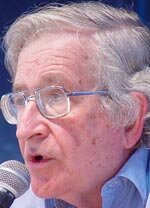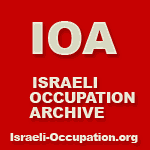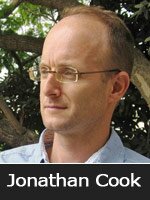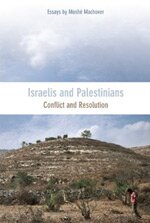By Amira Hass, Haaretz – 6 June 2011
www.haaretz.com/print-edition/features/israel-palestinian-conflict-is-in-the-eye-of-the-beholder-1.366212
Israel is fighting against the memory of the Nakba, whereas others are searching for ways to give the Nakba its rightful place in teaching and education

Amira Hass
Some six months ago, 54 Israeli and Palestinian students received a series of photos and were asked to describe them and jot down their impressions and the feelings stirred by them in two stages – before seeing the caption explaining them and then afterwards.
One of the photographs shows 10 men, their faces to a wall with their hands raised.
“I think they are Palestinian prisoners/terrorists who were caught by the army before embarking on an operation or preparing for one,” wrote a 23-year-old female student from Israel.
“The picture arouses sadness… [and is reminiscent of] the time of the Holocaust when the Jews were in the same position and the Nazis shot them one after another,” she continued.
“Perhaps they are not Arab terrorists, but it’s the massacre at Sabra and Chatila… Alongside the sadness I cannot completely identify with them. Perhaps they are planning to do something bad or even worse, planning to kill or murder Jews who are my friends, acquaintances and family.”
When the same student then discovered that the men facing the wall were members of the pre-state Palmach underground who had been apprehended by the British authorities at the time, she wrote: “The contradiction is striking. I perhaps associate the Palmach with heroism. This is my reality and my past as a Jew, and I am really sad seeing and knowing that the picture is of members of the Palmach.”
Another photograph shows a young individual holding a weeping girl, and next to them, a woman whose head is wrapped in a kaffiyeh and she is clasping her hands.
A 27-year-old male Israeli student wrote: “The first thing I noticed was the poverty… They look like refugees with great difficulties. The picture gives me a feeling of fear and horror. It reminds me a bit of images from the Holocaust.”
After being told that the photo was of a Palestinian girl and two girls in a refugee camp in the 1950s, the student wrote: “I think that in the past it was not easy to survive as a refugee. It was extremely difficult.”
Another photo shows a man, a woman and a girl, this time in a seedy looking room, sitting around a dining table.
A 20-year-old female student at a Palestinian university in the West Bank wrote: “The photo represents thousands of Palestinian families. The people in the picture are having lunch while their faces reflect despair, not happiness.”
After seeing the caption – “an immigrant family from Bulgaria eats dinner in their home in Jaffa in October 1949″ – the same student wrote: “[It turns out that] it is a Jewish family who came to settle in houses that didn’t belong to them. The people in this photo are not happy; they have a look of tiredness, sadness and a lack of solidarity on their faces. This family came to Palestine against their will; perhaps this family thinks: How did they end up here in a place that is not theirs; now they own the place while the original owners are scattered here and there.”
Commenting on another photograph, a 25-year-old Israeli male student wrote: “The picture shows prisoners from among a civilian population and fighters who are apparently threatened by a conqueror. The picture evokes harsh feelings, fear and terror. It reminds me a bit of firing squads during the Holocaust.”
The same young man, after learning that the photo was of Jews searching for weapons in the Arab village of Khulda, wrote: “Now, I feel confused, since we are dealing with Jews who are responsible for the Arabs’ situation [but] are not going to murder them. We are not so different from other peoples, and the Arab [Palestinian] population suffered many difficulties and hardships, in which we, the Jews, played a part.
“In this picture, we see helpless men putting their hands up. When I see this and know that the Jews are holding the weapons, it seems a bit more justified.”
Dispelling public myths
Some 32 such photos from 1948, along with the impressions of the Palestinian and Israeli students, appear in a book called “Zoom In, Palestinian Refugees of 1948, Remembrances.” The book was issued by the Holland-based Institute for Historical Justice and Reconciliation, which “seeks to dispel public myths about historic legacies in societies divided by ethnic conflict.”
In the summer of 2010, the institute hosted groups of Palestinian and Israeli academics from a variety of research disciplines.
Israel is fighting against the memory of the Nakba and the very historical truth, whereas researchers such as Mahmoud Yazbak of the University of Haifa, Menachem Klein of Bar-Ilan University, Sami Adwan of Bethlehem University and Efrat Ben Zeev of Sapir College and others are meeting and searching for ways to give the Nakba its large, rightful place in teaching and education, in the history of the land, and in the emotions and vision of the future.
They argued, disagreed and agreed and finally decided to create an album from the period and articles that analyze the students’ comments. Through the comments, the academics analyze the two societies – one victorious, silencing and keeping quiet, and the other, defeated, silent and violating the silence – with both competing over victimhood.
Ihab Saloul (a native of the Jabaliya refugee camp who teaches comparative literature at the University of Maastricht in the Netherlands ) writes: “The Nakba stories are stories of a people whose identity has been systematically unmapped in time and space, but who are now struggling to reclaim both their name and place on that map.”
Each essay deserves to be read and not just summarized in two sentences.
The directors of the IHJR, which was founded in 2004, admit they “chose to develop the project on respective remembrances of 1948 Palestinian refugees as part of its larger mission to promote historical justice and reconciliation in post-conflict situations.”
That is strange wording. Just how far away we are from a “post-conflict” situation, the chairman of the institute’s executive committee, Judge Richard Goldstone, can attest to.

























